Last year, I published a list of 12 stopped clocks I’d seen around Paris. Since then, looking for stopped clocks has become something of a hobby. So much so that I can now publish a follow-up list. This list of clocks is an excuse to look at the history and architecture of some of Paris’s most interesting, beautiful buildings.
I: Gare Saint-Lazare
I rounded up last year’s list with a clock from the front of the Gare Saint-Lazare, a railway terminus in Paris’s north west serving Normandy and the western suburbs. Today’s list starts with a clock from the same station, this time over on the other side. From the Place de l’Europe – Simone Veil – a roundabout-cum-bridge overlooking the station throat – one can see a small tower poking above the trainshed roof, sporting a perfectly unhelpful clock. Even if it were showing the correct time, its purpose would be mostly decorative: it’s out of sight of the platforms, which have clocks of their own.
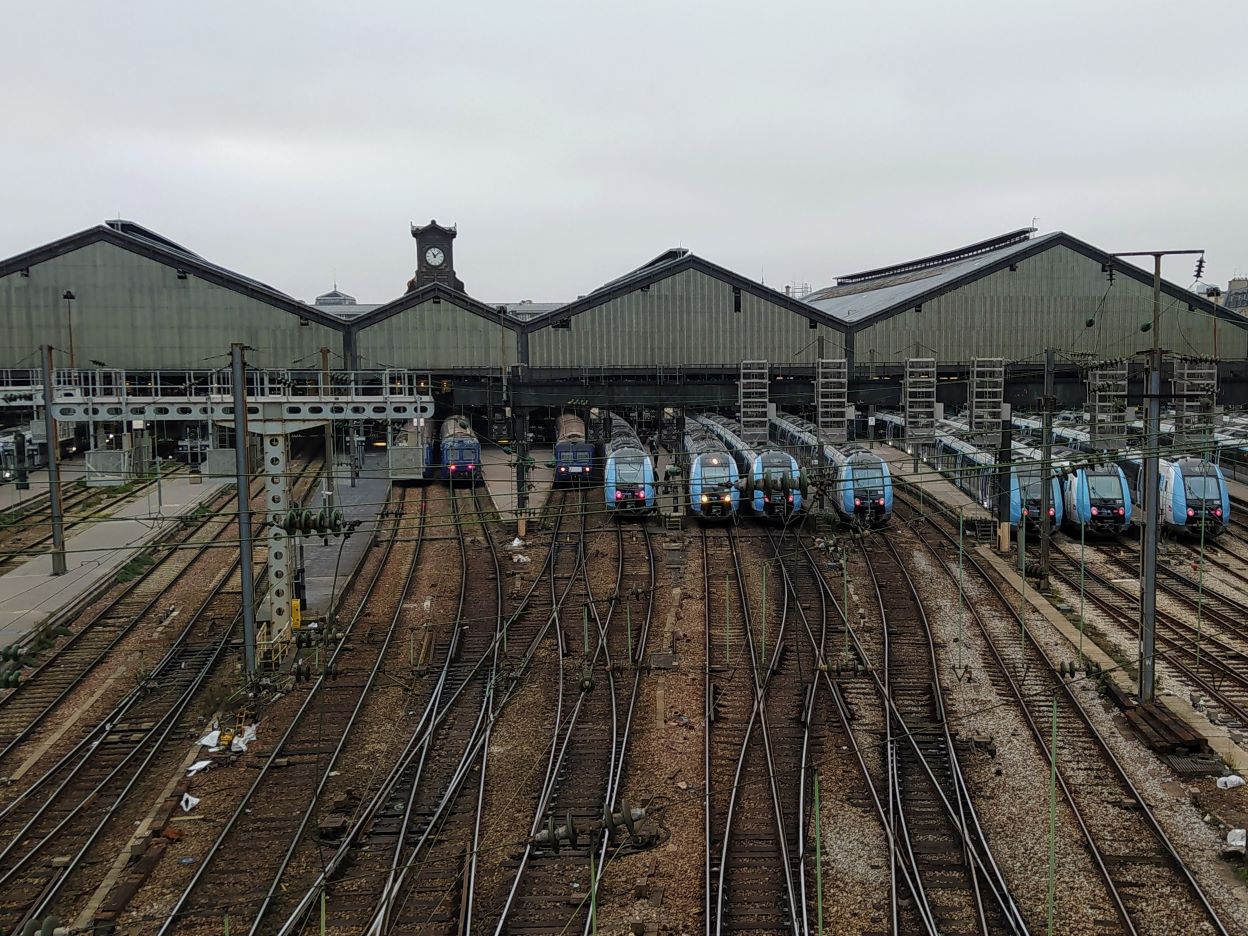
II: 5 rue des Italiens
Hundreds of thousands of commuters pour through Saint-Lazare every day. And while many transfer onto the metro, many more are able to walk to their workplace. One such workplace is at 5 rue des Italiens. This building was built in 1911 for Le Temps, a daily newspaper both edited and printed here. In September 1944, the newspaper was shut down by an ordinance targeting publications which had continued to circulate under the occupation. Its successor was Le Monde, which occupied the building until 1989. After that, it housed judicial services until they moved to Renzo Piano’s Cité judiciaire in 2018.
In 2021, after remodelling the interior, WeWork opened a coworking space in the building. Time will tell if that lasts: the famously scandal-ridden company is struggling.
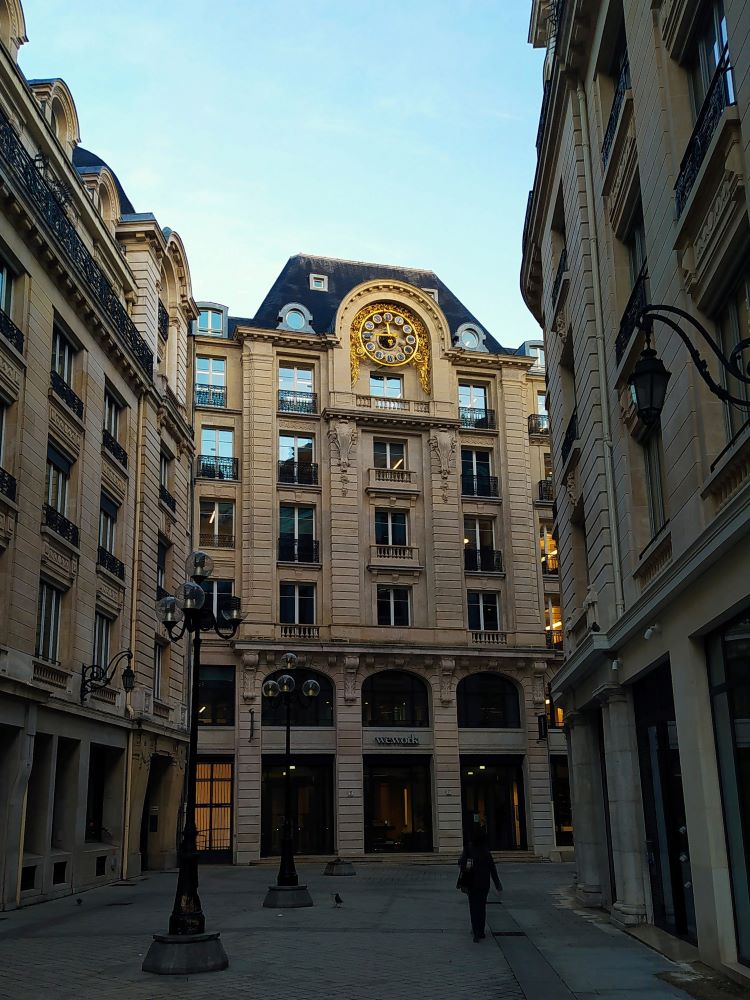
III: Le Centorial
Opposite the rue des Italiens stands another impressive office building with a storied history. Completed in 1876 as the headquarters of the Crédit lyonnais (LCL), it was given the opulence you’d expect of this pillar of the French banking sector. The building spans an entire city block, forming a trapezium between two main thoroughfares.
This edifice is notable for a number of reasons. Its western façade bears the scars of a First World War bomb. But the whole building came under an even bigger threat in 1996: a fire which burned for 19 hours and required 600 firefighters. The complex was renovated, but LCL sold off a major part of it to insurance company AIG. Today, it’s home to investment management firm BlackRock; but the northern façade, along the boulevard des Italiens, still hosts its historic occupants. It’s this side which sports a fine example of a stopped clock.
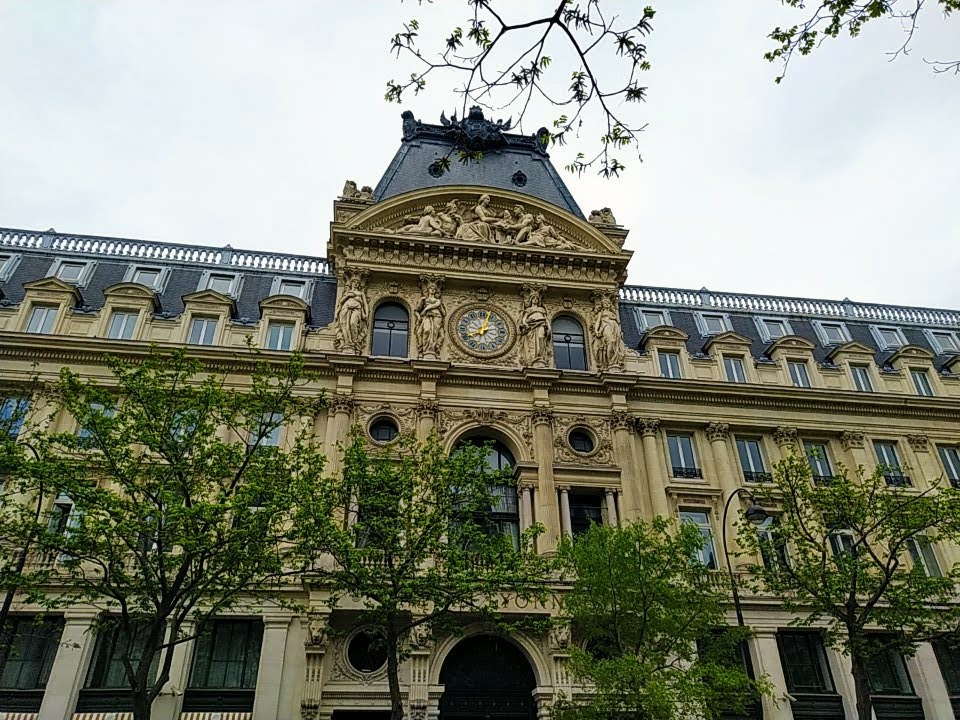
IIII: BNP Paribas headquarters
LCL wasn’t the only big bank in town. The headquarters of both its historic rivals, BNP Paribas and Société Générale, have Parisian headquarters with comparable splendour. And in the case of BNP Paribas, these headquarters sport a similarly stationary timepiece.
This building was completed in 1881 for the Comptoir National d’Escompte de Paris, one of the predecessors of the modern French bank. It was designed by Édouard Corroyer, a student of Viollet-le-Duc best known for restoring the Mont-Saint-Michel. It’s a classic example of the eclectic style, popular during the reign of Napoleon III, which brought together elements from France’s architectural history.
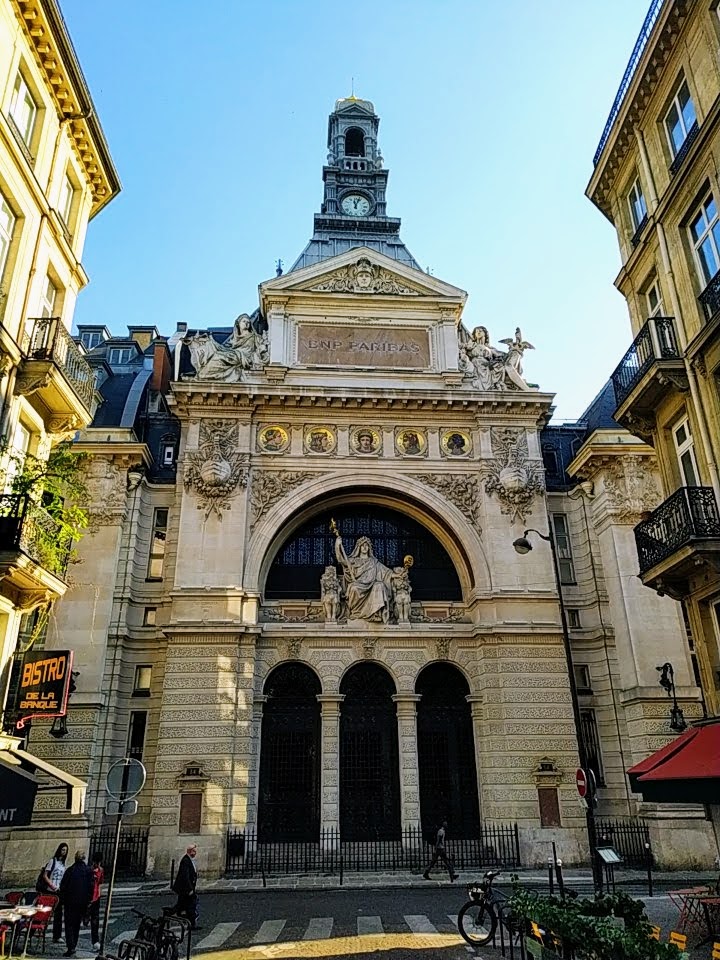
V: 134 rue Réaumur
While the big banks’ headquarters are renowned for their splendour, they didn’t stop there. For an agency on the rue Réaumur, Société Générale employed the same architect it had engaged for its headquarters: Jacques Hermant.
In 1897, the final section of the rue Réaumur, an important axis running east through the 2nd and 3rd arrondissements, was completed. Wanting to encourage beautiful new buildings on the street, the city of Paris organised a contest, with prizes for the best façades. Starting in 1898, this competition ran until the 1930s, with six winners every year from across the capital. But it was on the rue Réaumur where it all began, and this street produced plenty of applicants. One such building, completed in 1901, was Hermant’s Société Générale office, which sports a handsome – if inaccurate – clock.

VI: Société Générale Agence Y
Next on the list is another Société Générale building. The branch at a crossroads on the rue de Turenne, in the heart of the Haut-Marais, shows that the bank paid attention to appearances as much for small offices as large ones.
The building apparently dates all the way back to 1800, but it’s unclear when the façade was added. Société Générale was founded in 1864, but I haven’t been able to ascertain when they opened a branch here. The branch was definitely established by the 1920s, as a historic postcard shows. Is it a coincidence that the clock was showing 2:00 in that postcard, just as it does today? Or was it already stopped? Did it ever work?

VII: 61-63 rue Réaumur
For our seventh clock, let’s head back to the rue Réaumur. The Société Générale building at number 134 was at the western end of the new section which opened in 1897. At the other end, and on the other side of the road, was another edifice with similar grandeur. The mixed-use building at numbers 61-63, the work of architects Philippe Jouannin and Édouard Singery, was completed in 1900. The building combines elements of Art Nouveau, the architectural movement all the rage in turn-of-the-century Paris, with a neogothic style, which had largely fallen out of favour by this time. The result is striking, and a look at the central part of the façade has many sources reaching for the word “cathedral”.
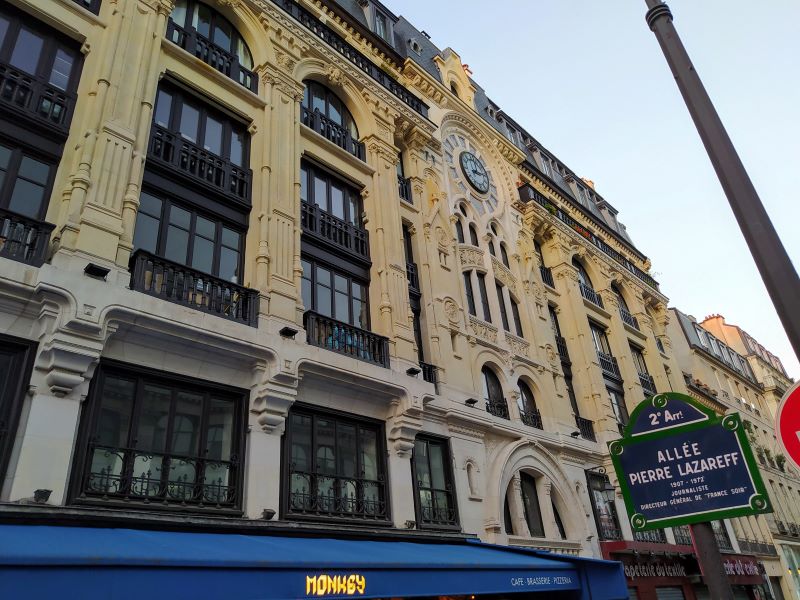
The clock is an important element in this building’s design. Symbols representing the twelve signs of the zodiac are arranged around the clock face, with their animal representations repeating the idea below, adorning the high central windows. The faces either side personify the four seasons.
The façade was recently uncovered after being hidden behind hoardings for renovation. Perhaps this explains why the clock was not operational when I snapped it last October.
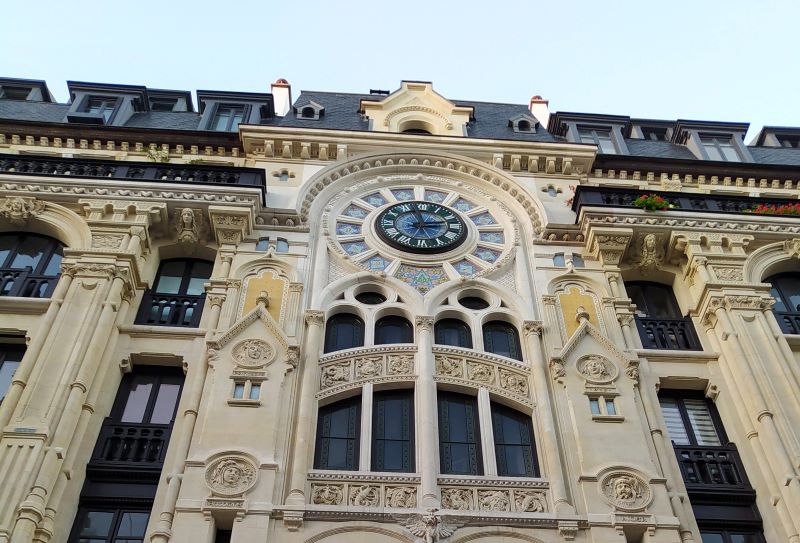
VIII: Bibliothèque Nationale
France’s first national library was established in the Louvre castle in 1368. Legal deposit was established in 1537, making this royal collection a library of record in the modern sense. In 1666, after occupying various locations around the country, the library came to the 2nd arrondissement of Paris.
In 1996, the huge glass towers of the Bibliothèque François Mitterrand opened in the 13th arrondissement, and the headquarters shifted there. But the historic site remained as part of the library, and starting in 2010, a wholesale renovation was undertaken. This was completed in September 2022, with the reading room and a museum collection allowing visitors in to see the building’s intricate interior. But it seems this clock overlooking an outside courtyard was never fully restored.
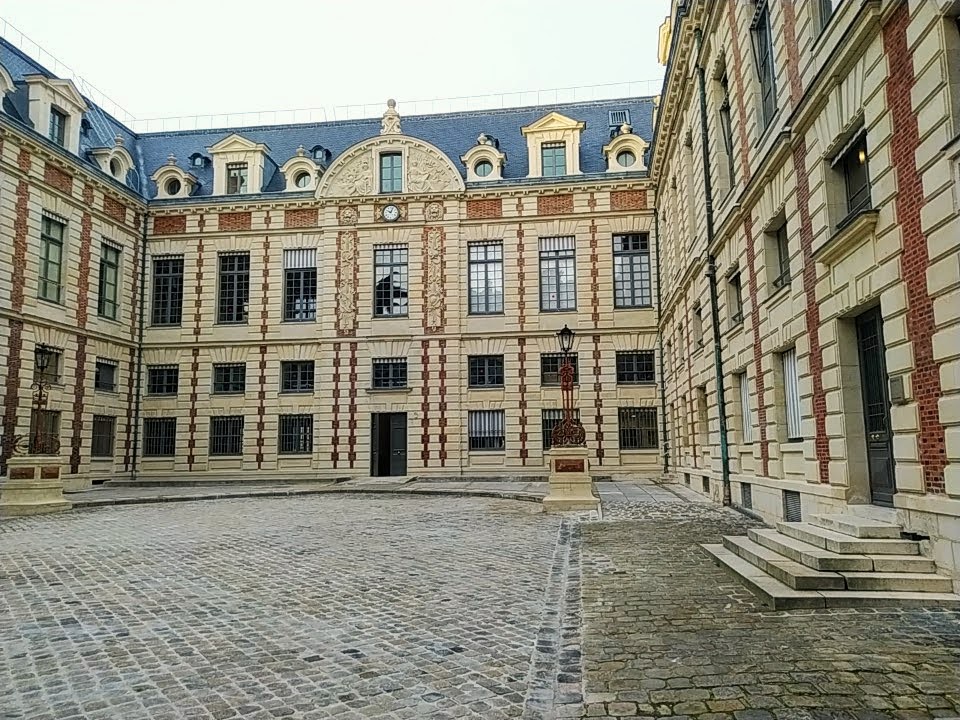
IX: Ministère des Armées
Crossing the river to the government buildings of Paris’s left bank, we find a distinctive clock tower with two faces set at an obtuse angle. The ministry of the armed forces has been based at the Hôtel de Brienne, an hôtel particulier in the 7th arrondissement, since 1817. Over time, the ministry expanded into neighbouring buildings, culminating in 1883 with the completion of this façade, on the corner of the boulevard Saint-Germain and what is today the place Jacques-Bainville.
The ministry decamped to the 15th arrondissement in 2015, but the minister continues to reside at the Hôtel de Brienne, more convenient for access to the National Assembly. It’s unclear exactly what this building is used for today.
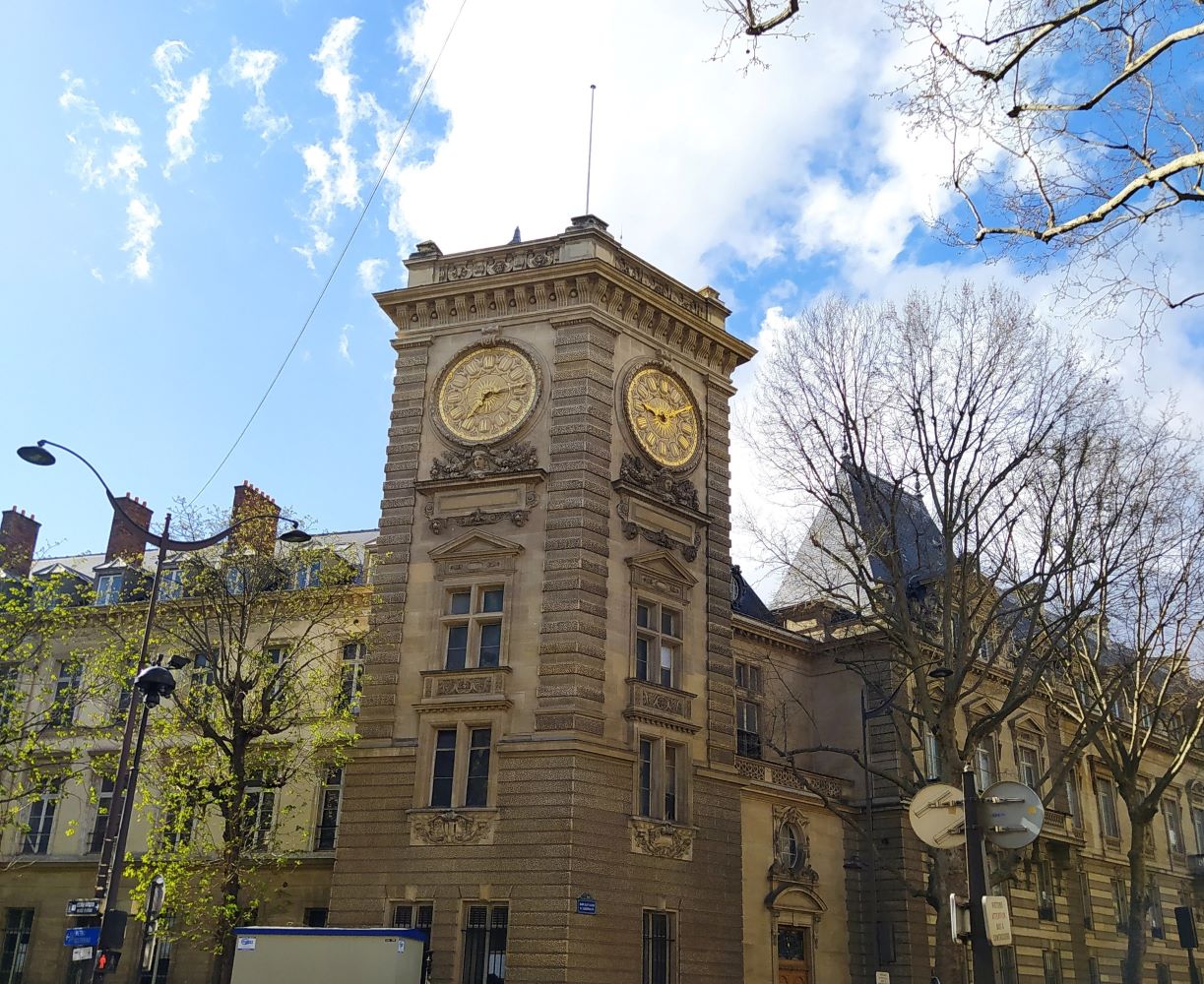
X: Hôtel de la Garantie
The Hôtel de la Garantie, in the 3rd arrondissement overlooking the Square du Temple, was built in 1925 for the government’s precious metal inspectorate. Its red-brick façade, rare in Paris, displays the names of various cities around the country. After several years of vacancy, the building reopened in 2022 as a new police station for Paris Centre, replacing the separate stations which previously served each of the first four arrondissements individually.
The refit proved controversial. The building wasn’t legally protected, allowing the renovators to destroy some key historic features. Local councillors tried to intervene at the last minute, but the refurbishment went ahead and the police station is now fully operational. The exterior still looks fabulous, including the unmoving clock on the front façade.

XI: Caserne des Minimes
In 1605, a convent of the Italian religious order of the Minims was established in what is today the 3rd arrondissement, near the Place des Vosges. In the Revolution, the building was seized, with most of the associated church demolished and the remainder appropriated by the Gendarmerie. In 1911, the convent buildings were replaced with the red-brick structure we see today. But in 2020, the barracks were transformed into social housing, with the central courtyard opening as a public park. The garden was named in honour of Arnaud Beltrame, a gendarme who gave his life to save a hostage during an Islamist terror attack in southern France in 2018.
From the public garden, a clock is visible on one wall of the barracks. It shows the same time in every photograph.
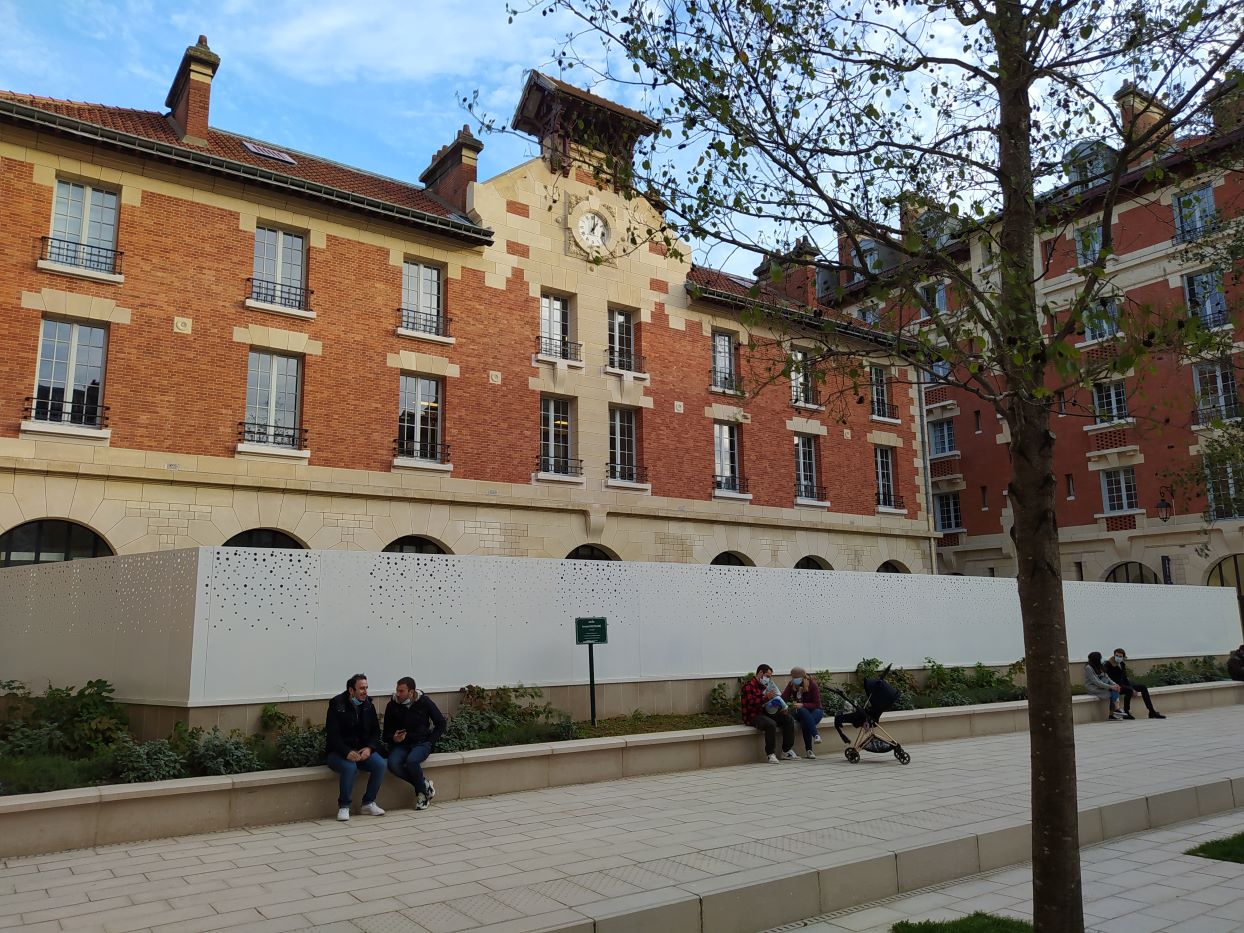
XII: Louvre
The clock tower of the Louvre stands between the palace’s two main courtyards, the Cour Carrée and the Cour Napoléon. It was constructed in the 17th century, when it was still a royal palace, making it one of the older buildings visible from the pyramid: the northern and western façades of the Cour Napoléon date only to the 1850s.
The tower – officially known as the Pavillon Sully – was the inspiration for the Crédit lyonnais building. And like its financial copycat, it too features a clock showing the wrong time.
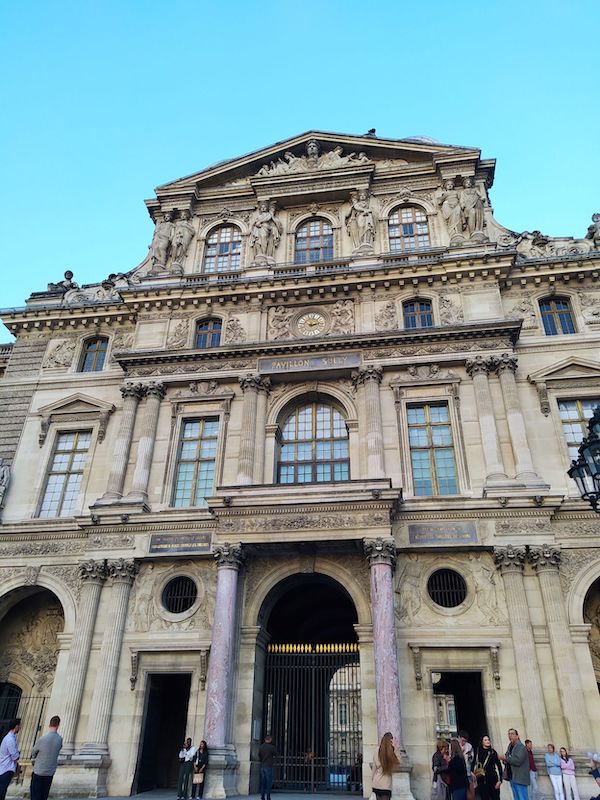
There will probably be a part 3 to this series. If you’ve clocked any stationary timepieces you’d like me to include next time, please do get in touch. As always, thank you for reading.
 Fabric of Paris
Fabric of Paris